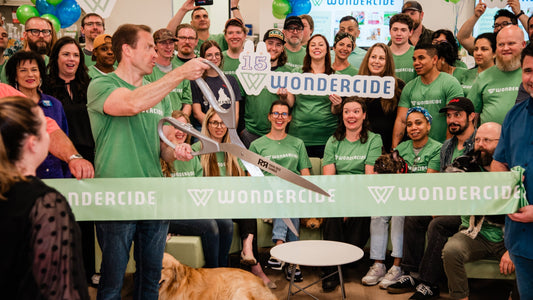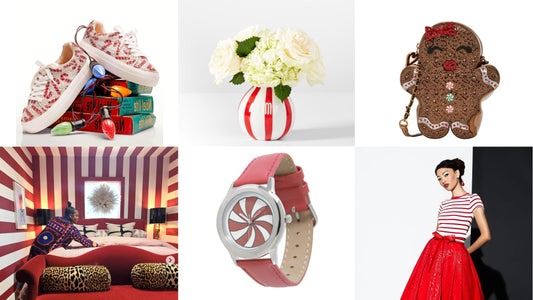If you’re confused by the rules and regulations of recycling, you’re not alone.
Fewer than half of U.S. consumers who took a recent survey on recycling habits knew the basics.
While paper is one of the easiest materials to recycle, what’s up with recycling glass, metal, and plastic?
Recycling can be confusing given the wide range of recyclable materials out there and the different rules and guidelines that apply to them. No universal law governs how recyclables should be disposed of, so rules can differ greatly from region to region, which ultimately leaves people confused or stuck in old, outdated ways.
We believe in making everything as simple and clear as possible, and we hope this guide dispels some of the misconceptions that continue to hamper the industry.
1. Know your plastics.
If you’re looking for a primer on plastics — the material that’s used to make many of the household goods we purchase — here are some basics.
Look for the familiar triangular recycling symbol on the bottom of each container. A resin code/number next to it will tell you if it can or cannot be recycled.
To help with the process, get to know in advance what your local curbside recycling program will accept. The products listed below that are numbered 1 and 2 are widely accepted by most municipalities and fall into the plastic bottles category. Putting the wrong items in the recycling bin can damage the recycling stream, so be thoughtful when making your selection.







PET #1 (polyethylene terephthalate) — includes water and soda bottles, peanut butter jars, salad dressing and ketchup bottles. Generally accepted by most curbside recycling programs.
HDPE #2 (high-density polyethylene) — includes milk jugs, Wondercide containers, juice bottles, yogurt containers, bleach, detergent, and shampoo bottles. Generally accepted by most curbside recycling programs.
PVC #3 (polyvinyl chloride) — includes some shampoo brands, cooking oil bottles, blister packaging, siding, and PVC piping. DO NOT put any of these items with resin code #3 into the recycling bin as this plastic is highly toxic. Throw these items in the trash.
LDPE #4 (low-density polyethylene) — includes squeezable bottles, dry cleaning bags, frozen food packaging, as well as the plastic covering that most bread comes in. Not every recycling program will take them. If your community recycling program does not, you can throw them in the trash.
PP #5 (polypropylene) — includes some yogurt containers, medicine bottles, as well as caps and straws. Caps are not recyclable and should be thrown into the garbage.
PS #6 (polystyrene) — includes disposable plates, cups, cutlery, coffee lids, some egg cartons, some take-out containers, as well as aspirin bottles. Many recycling programs do not take these products. Check beforehand and if they don’t take them, be sure to place them in a bag for the trash can.
Miscellaneous #7 plastics — includes all plastics that don’t fit into the above categories. Products include 3 and 5-gallon water bottles, sunglasses, computer cases, signs and displays, certain food containers, bullet-proof materials, nylon, and Wondercide sprayers. They are classified as polycarbonates and are not recyclable. Note: Wondercide plastic bottles are recyclable, just not the sprayer attachments or the caps.
2. Common recycling questions — and answers.
Even with all of this knowledge under your belt, you may still have questions. It’s all good — most people do!
That’s why we’ve selected the most frequently asked questions that relate to the recycling of common household items.
-
Can I recycle milk cartons?
Contrary to popular belief, you can’t recycle milk cartons because the packaging used in this frequently purchased grocery item is called a Tetra Pak and it is not easily recyclable.
Other items packaged this way include broth and some soup brands, juice boxes, and ice cream containers.
It’s best to send them to the trash or better yet, purchase the same product that comes in alternative packaging, such as plastic milk bottles and cans of soup.
-
How do I dispose of single-use coffee K-Cups and pods?
Resist the temptation to throw your used Starbucks or Dunkin’ Donuts coffee cups or pods into the recycling bin. Most cups that accommodate hot liquids like coffee and tea are coated with plastic to prevent leaks, making them unfit for recycling. Best to trash them instead.
An eco-friendlier alternative to single-use cups or pods is to use your own reusable and refillable container. That way, you’ll be doing your part to stop the 50 billion coffee cups that the U.S. sends to the waste stream every year.
-
Can I throw grocery bags in the recycling bin?
Believe it or not, these lightweight products can get stuck in the recycling equipment. Instead, take them to your local grocery store where they can be passed on to recycling companies that have the machinery to handle them.
-
What should I do with plastic wrap?
Plastic wrap, also known as cling wrap, gums up recycling machines, so it’s a definite no-no. Throw it in the trash.
-
What about other wraps and films that cover common household goods?
While many of these products belong to the #2 and #4 plastics category, it is best to take them to your local grocery store, along with your used grocery bags because some curbside recycling programs won’t take them.
-
How should I get rid of cardboard boxes?
Paper products, including cardboard boxes, are easy to recycle. Before you do, break them up first, and if you have several boxes for the recycling bin, bundle them together for easy collection.
-
Are soup and vegetable cans recyclable?
Most cans can be recycled. However, it’s important to look at the bottom of the can before purchasing. If it contains resin code #7, that means the can is lined with BPA (Bisphenol-a), which makes the recycling of the product more difficult. Throw those in the garbage.
-
How should I dispose of bubble-lined paper and plastic mailers that come in the mail?
Some recycling programs may take them. If not, find a local facility that recycles plastic film.
-
Even if paper plates, napkins and pizza boxes are soiled and greasy, can I still recycle them?
Despite popular belief, all of these should be thrown into the trash unless you can salvage the cover of the pizza box and recycle it with other cardboard.
-
Can I recycle takeout containers?
Plain takeout containers and aluminum containers can both be recycled provided they are rinsed beforehand. However, the containers you get at your local Chinese restaurant or the familiar containers at the salad bar contain a sealant that makes them difficult to recycle. It’s best to throw those into the trash.
-
Should batteries be recycled?
Do not recycle batteries in your weekly recycle bin. What you do next depends on the type of battery you have.
----- Single-use alkaline or zinc carbon batteries: These are the most common household battery. In most towns in the U.S., you can throw them into the trash.----- Button-cell, coin-shaped, or lithium single-use batteries: Do not put these batteries in the trash or recycling bin. Instead, find a recycling location near you:
-------- Lithium single-use
-------- Button-cell or coin
----- Rechargeable or automotive batteries: Check out your options via the Epa’s battery info page here.
-
How should I dispose of wires, hoses, chains, and electric cords?
These items cannot be recycled. Either chuck them in the garbage, reuse them until they no longer work, or donate them.
-
Can I recycle small lightbulbs and fluorescent light bulbs?
It all depends on your local curbside recycling program since many lightbulbs are considered hazardous waste. It is best to either find a recycling center near you that will take them or drop them off at any IKEA, Home Depot, Lowes, or Batteries + Bulbs store.
-
Can I recycle old dishware, glassware and mirrors?
Glassware and Pyrex, which are the materials used in many of our household dishware, cannot be recycled. Mirrors and glassware are also not permitted by most recycling programs. Consider giving them to your local thrift store like Goodwill or selling them.
-
Can clothing and shoes be recycled?
Yes, clothing and textiles are 100% recyclable. You may want to consider taking them to your local recycling center, especially if they are torn and not suitable for donation.
-
What should I do with unwanted clothes hangers?
If the hangers are still usable, some community recycling programs may take them, but it depends if they are made of plastic, metal or wood.
Broken metal hangers are off limits since they can damage the recycling equipment and wooden hangers are treated with a varnish that also makes them unsuitable for recycling. Check with your local recycling program or take them to your dry cleaner.
-
What kinds of beauty products can I recycle?
Eyeshadow palettes, powder compacts, perfume bottles, and glass containers can all be placed in the recycling bin but be sure that they are free of product before throwing the cases/bottles into the bin. Lipstick and mascara are not recyclable and should be thrown into the trash. Some beauty brands have recycling programs.
-
Getting rid of electronics — responsibly.
It goes without saying that throwing old or broken electronics into the trash is not a good idea. Such products are considered e-waste.
They include:
- TVs- computers
- tablets
- mobile phones
- printers
- radios
- toasters
- stereo systems
Do not put them in along with your other curbside recyclables. Delete all personal information from your devices, remove the batteries, and take to your local recycling center.
Another alternative is to take them to an electronic store for recycling, a free service offered by many large chains in the U.S.
Staples stores nationwide accept most e-waste, except for TVs, smoke detectors, large speakers, kitchen electronics, appliances, and alkaline batteries. There is a limit of 7 items per customer per day.
Best Buy also has a recycling program. Laptops, radios, fans, curling irons, alarm clocks, and vacuums are among the items they accept.
AT&T stores and Apple will also recycle or trade in your old mobile phones.
If you’re still stumped on where to send your recyclables , here are some handy resources you can rely on.
- Call2Recycle
- Earth911
- GreenerGadgets
Together, we can help create a healthier Earth! 🌎




